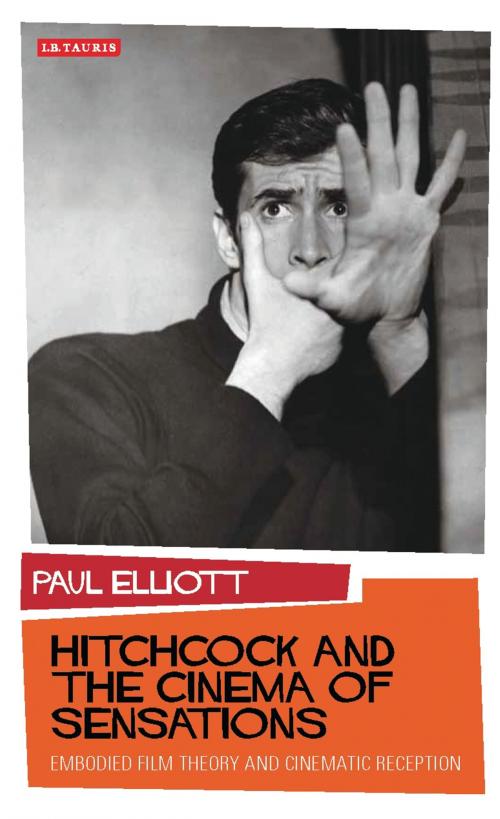Hitchcock and the Cinema of Sensations
Embodied Film Theory and Cinematic Reception
Nonfiction, Entertainment, Performing Arts, Film| Author: | Paul Elliott | ISBN: | 9780857730947 |
| Publisher: | Bloomsbury Publishing | Publication: | August 30, 2011 |
| Imprint: | I.B. Tauris | Language: | English |
| Author: | Paul Elliott |
| ISBN: | 9780857730947 |
| Publisher: | Bloomsbury Publishing |
| Publication: | August 30, 2011 |
| Imprint: | I.B. Tauris |
| Language: | English |
What happens to us when we 'see' a film? For the experience of what we see on screen draws as much upon the non-visual senses as it does on sight. In the first full-length analysis of the concept of embodied film theory, Paul Elliott charts the development of a 'cinema of sensations' - examining how cinema audiences use their corporeal selves and sensual memory to quite literally flesh out what they see on screen.
Through the prism of Alfred Hitchcock's films, Elliott reveals how the body's sensations have a vital place in cinematic reception and the study of film: demonstrated here through the trope of nausea in Frenzy, pollution and smell in Shadow of a Doubt, physical sound reception in the Psycho shower scene and the importance of corporeality and closeness in Rear Window. He traces the way in which conceptual tools such as haptic vision, synaesthesia, physical sound reception and the aesthesiological body have been employed by film theorists and philosophers to better understand the processes inherent in the cinematic experience. He argues that the trend towards a sensually-based theoretical framework for film is indicative of a wider trend in visual thinking that is, in turn, linked to epistemological shifts and transformations in the way we situate ourselves in the world.
Hitchcock and the Cinema of Sensations rethinks the body in the ci nema seat, seeing it not as a fleshy, insentient shell for the mind and eye but a feeling, thinking, evanescent site of sensation, memory and knowledge. The book provides a thoroughly new take on Hitchcock's classic films in order to demonstrate how taste, smell, hearing and touch can provide us with a corporeal level of understanding that sometimes compliments, sometimes clashes, with our more cognitive capabilities in the reception of film. This is essential reading for scholars and students of film studies, cultural theory and philosophy.
What happens to us when we 'see' a film? For the experience of what we see on screen draws as much upon the non-visual senses as it does on sight. In the first full-length analysis of the concept of embodied film theory, Paul Elliott charts the development of a 'cinema of sensations' - examining how cinema audiences use their corporeal selves and sensual memory to quite literally flesh out what they see on screen.
Through the prism of Alfred Hitchcock's films, Elliott reveals how the body's sensations have a vital place in cinematic reception and the study of film: demonstrated here through the trope of nausea in Frenzy, pollution and smell in Shadow of a Doubt, physical sound reception in the Psycho shower scene and the importance of corporeality and closeness in Rear Window. He traces the way in which conceptual tools such as haptic vision, synaesthesia, physical sound reception and the aesthesiological body have been employed by film theorists and philosophers to better understand the processes inherent in the cinematic experience. He argues that the trend towards a sensually-based theoretical framework for film is indicative of a wider trend in visual thinking that is, in turn, linked to epistemological shifts and transformations in the way we situate ourselves in the world.
Hitchcock and the Cinema of Sensations rethinks the body in the ci nema seat, seeing it not as a fleshy, insentient shell for the mind and eye but a feeling, thinking, evanescent site of sensation, memory and knowledge. The book provides a thoroughly new take on Hitchcock's classic films in order to demonstrate how taste, smell, hearing and touch can provide us with a corporeal level of understanding that sometimes compliments, sometimes clashes, with our more cognitive capabilities in the reception of film. This is essential reading for scholars and students of film studies, cultural theory and philosophy.















